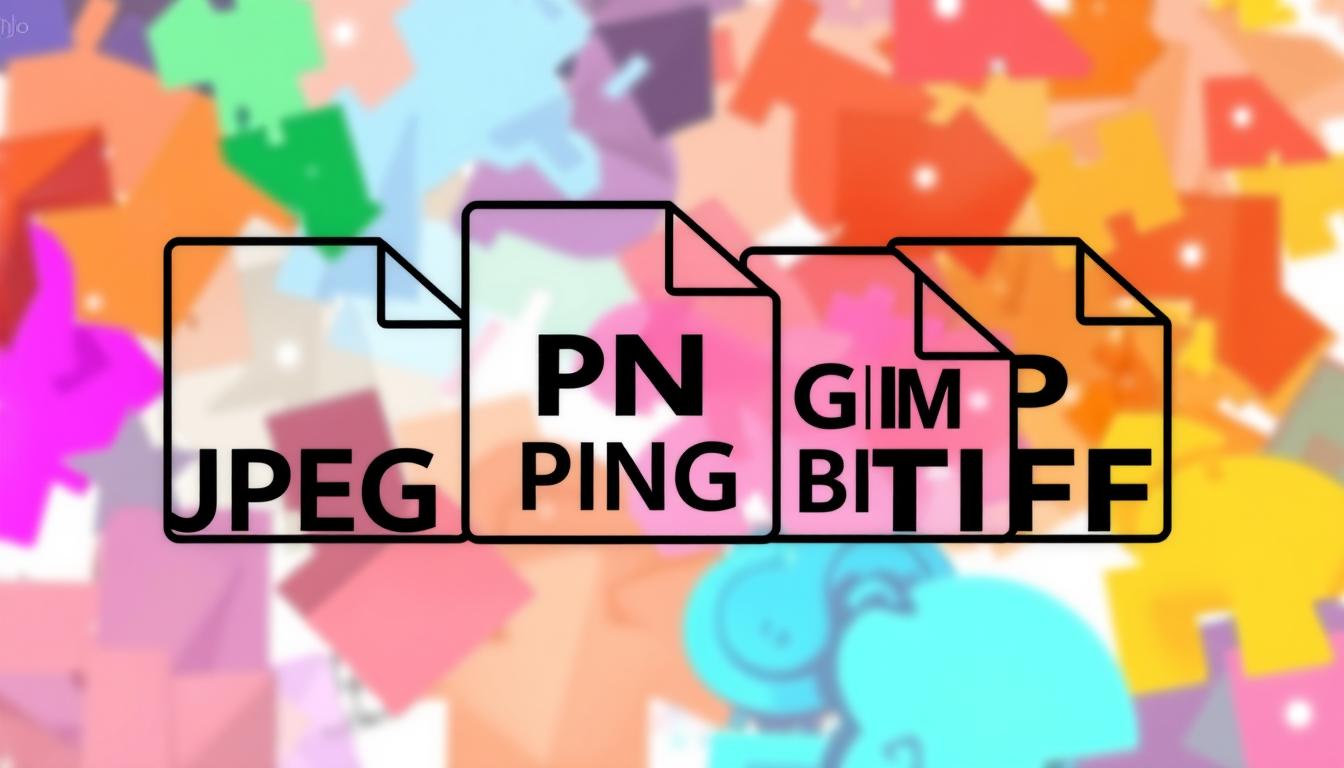Image File Types Explained: Which Format to Use?
Choosing the right image file format is key for visual communicators. Whether you’re a web developer, graphic designer, or photographer, the right format affects your work’s quality and size. We’ll explore different formats to help you pick the best one for your needs. JPEG, PNG, GIF, TIFF, and more are common in digital imagery. Each has its own strengths and weaknesses, making some better for certain uses1. For example, JPEGs are great for the web and Microsoft Word because they’re small1. PNGs work well for web projects because they have transparent backgrounds and can be edited without losing quality1. GIFs are perfect for web animations because they’re quick to load and have a simple color palette1. Key Takeaways Different image file formats have unique strengths and weaknesses, making them better suited for certain applications. JPEG is a common file type for the web and Office documents, with “lossy” compression. PNGs are ideal for web projects due to transparent backgrounds and “lossless” editing capabilities. GIFs are associated with limited colors and are frequently used in quick-loading web projects. TIFFs are large, high-quality raster files recommended for print but not for web use. Knowing about these image file types helps you choose the right one for your projects. Whether it’s for the web, print, or multimedia, understanding these formats is crucial. We’ll dive deeper into vector vs. raster graphics, high vs. low resolution, and new formats like AVIF and APNG. Vector vs. Raster Images There are two main types of image files: vector and raster. Raster images are made up of pixels, each with its own color2. When you zoom in, the pixels show, making the image blurry2. Formats like TIFF, PSD, and JPG are used for photos and detailed images2. Vector images, however, use math to define shapes and colors2. This makes them perfect for designs that need to be scaled up without losing quality2. Formats like AI and EPS are used for vector graphics2. Raster Image Files Raster images are great for photos because they can show many colors and gradients3. But, they can become blurry when enlarged because of their pixel nature2. Increasing the DPI of a raster image makes it larger and more detailed, but also increases its file size2. Vector Image Files Vector images are best for logos and designs with solid colors3. They can be scaled up or down without losing quality, making them ideal for flexible designs2. Vector images also take up less space than raster images3. Raster images are great for photos, while vector images are better for scalable designs3. It’s best to convert raster images to vector for simple designs, not complex photos2. Adobe Illustrator can help convert raster images to vector2. Vector images can also be turned into raster formats for easier sharing2. In summary, knowing the difference between raster and vector images is key for choosing the right file type for your designs. Raster images are best for photos, while vector graphics are ideal for scalable designs and logos234. High Resolution vs. Low Resolution When it comes to images, resolution is key. Image resolution is how many pixels are packed into an image, shown in dots per inch (DPI) or pixels per inch (PPI)5. These numbers tell us if an image’s pixel density fits the task at hand, whether it’s for print or web5. Websites usually show images at 72 DPI, which is low5. This works well online but fails for print5. For top-notch prints, you need at least 300 DPI5. Knowing the difference between high and low resolution images is vital for the right look6. Good images on websites help engage and inform visitors6. But for printed stuff like brochures or posters, you need a higher resolution for clear images5. By choosing the right image resolution, you make sure your visuals look great and are ready for their purpose6. Types of Image Files In the digital world, many image file types exist, each with its own strengths. It’s key to know their characteristics and when to use them. Let’s look at the main types of image files. JPEG (or JPG) – Joint Photographic Experts Group JPEGs are the top choice for web images because they balance quality and size well. They use “lossy” compression, which is great for photos and images with lots of colors7. Even though they lose some quality, this is often not noticeable, making them popular for web use. PNG – Portable Network Graphics PNGs offer lossless compression, keeping image quality high without increasing file size7. They’re perfect for images with transparent backgrounds, like logos. PNGs also support more colors than GIFs, making them better for photos on the web. GIF – Graphics Interchange Format GIFs are known for simple animations, often used online and on social media7. They work well with solid colors and simple graphics. GIFs are small and support animation, making them great for web use. TIFF – Tagged Image File TIFF is a top choice for print and publishing7. It’s a lossless format, which means it keeps image quality high but makes files larger7. TIFFs are used for high-quality scans and professional photos, where keeping image quality is crucial. PSD – Photoshop Document PSD files are for Adobe Photoshop, the leading image editing software. They have layers for editing without losing data. PSDs are mainly used in Photoshop but can be exported to other formats like JPEG and PNG. PDF – Portable Document Format PDFs are versatile and widely used for sharing documents and graphics7. They’re good for vector graphics, like logos and illustrations, because they keep quality when scaled. PDFs are also used for print-ready materials. EPS – Encapsulated Postscript EPS is a vector format used in design and printing8. It keeps vector information, allowing for high-quality output at any size. EPS files work with many design software, making them easy to use across different workflows. AI – Adobe Illustrator Document AI files are for vector graphics and illustrations, the industry standard8. Created in Adobe Illustrator, they’re versatile and can be … Read more


